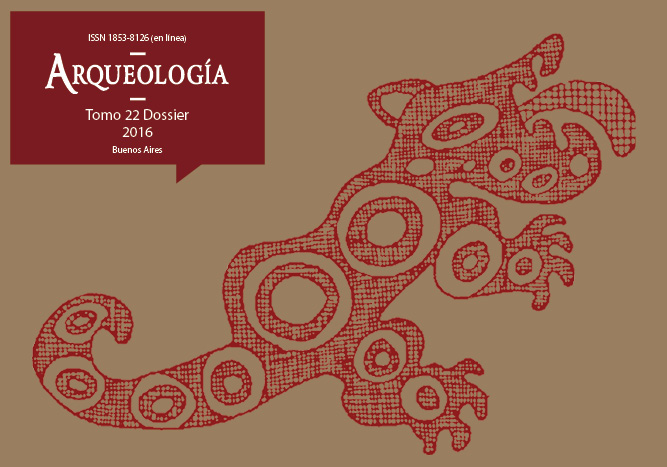Stable isotopes, mobility and camelids in early agropastoralist societies of the Southern Argentine Puna
Keywords:
Stable Isotopes, Camelids, Southern Argentine Puna, Herders, Mobility
Abstract
This article explores the management and acquisition of domestic and wild camelids as part of the economic and mobility strategies of agro-pastoralist groups in Antofagasta de la Sierra (Catamarca, Southern Argentine Puna) during the Formative Period, between ca. 3000 and 1000 years BP. In this respect, we present 25 δ13C values extracted from collagen taken from camelid bone remains at the site of Casa Chávez Montículos. These values where then contrasted and discussed in relation to isotopic data from modern-day camelids in the study area. The results thus obtained allow us to posit a hypothesis concerning the existence of a logistic pattern of territorially generalized hunting throughout the whole of the period considered here. Likewise, we observe a change in the management strategies of space and herding resources during the Early and Late Formative. In this manner, while during the Early Formative the main herding strategy consisted of the exploitation of natural pastures in existence across the different micro-environmental zones of the area; towards 1800 year BP we see the emergence of a new strategy. This last is characterized by a reduction in mobility and the consumption by domesticates of complementary supplementary fodder.Downloads
Download data is not yet available.
How to Cite
Grant, J., & Olivera, D. (1). Stable isotopes, mobility and camelids in early agropastoralist societies of the Southern Argentine Puna. Arqueología, 22(3), 13-35. https://doi.org/10.34096/arqueologia.t22.n0.3275
Section
Articles
Authors who publish in this journal agree to the following conditions:
- Authors retain copyright and yield to the journal right of first publication with the work registered with attribution license Creative Commons, which allows third parties to use the published always mentioning the authorship of the work and first publication in this magazine.
- Authors can make other independent and additional contractual arrangements for the non-exclusive distribution of the version of the article published in this issue (p. Eg., Inclusion in an institutional repository or publish it in a book), provided that clearly indicate that the work was published for the first time in this magazine.
- It allows and encourages the author / s to publish their work online (eg institutional or personal pages) before and during the process of revision and publication, as it can lead to productive exchanges and greater and more rapid dissemination of work published (See The Effect of Open Access).





(1)13.png)






1.jpg)
1.jpg)


13.png)
1.png)


(1)1.png)









